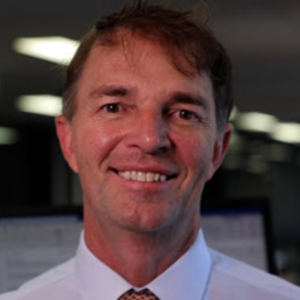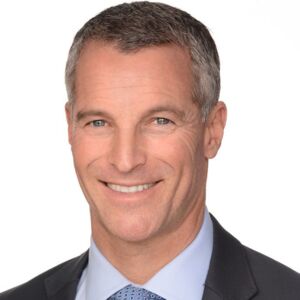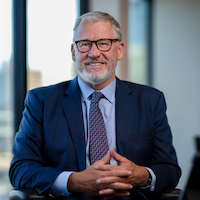"Philanthropists take a warm heart and cold eye approach to their giving": Q&A with Perpetual's Caitriona Fay

The title of 'Philanthropist' is no longer a title exclusively held by Australia's wealthiest, with the recent Giving Australia 2016 report showing that nearly 15 million Australians donated approximately $12 billion in philanthropic funds last year. The report also highlights that while less people are digging deep into their pockets, those who are tend to be donating more than those studied for similar reports in 2005.
What does this mean for Australia's philanthropic sector? Perpetual's Caitriona Fay (pictured, below), National Manager Philanthropy and Non Profit Services answers some of our questions, speaking on the 'democratisation' of philanthropy, the biggest challenge facing the sector and the importance of growing a culture of transparency.

"There's a growing thoughtfulness about the practice of giving rather than just the act itself." - Caitriona Fay
Perpetual's Chair, Peter Scott, mentioned that many philanthropists have also been entrepreneurs in the past and are therefore seeking "business-like" proposals and processes. From the information presented in the report, what would you say are the most important areas for organisations to focus on in order to be seen as attractive investments?
We're increasingly seeing philanthropists take a warm heart and cold eye approach to their giving. A big driver in giving is always going to be connectedness to a cause; however, philanthropists want to invest in organisations that can maximise their outcomes within those causes. Increasingly, that means looking for organisations that demonstrate their capacity to have impact, have a strategy in place to help them achieve that, and invest in the right people to get them there. All of these things relate to the governance of an organisation, its leadership and its transparency.
Participants recommended several actions to grow structured giving, such as increasing awareness and skills among solicitors and financial advisers. How do you feel this could be implemented?
The trusted adviser is critical to bringing individuals and families to philanthropy. Some advisers may be reluctant to discuss philanthropy because they don't feel they have the skills to support their clients in their philanthropic endeavours. Trustee companies have long played the supporting role of working with accountants and lawyers to make philanthropy possible for their clients but over the last decade we've also seen a growth in speciality philanthropic service providers that any adviser can tap into for technical expertise on the giving options available and the most appropriate approaches for their clients.
Even with these support services available, we still need advisers to know enough about trigger events that bring individuals to philanthropy, as well as the options available to the client to structure their giving. To that end, we need to see tertiary institutions that are responsible for the training of advisers introducing philanthropy into the curriculum. We also need to see advice networks and industry bodies continue to provide opportunities for professional learning and development around philanthropy.
In your opinion, how did the 'democratisation' of philanthropy come about?
Philanthropy has traditionally been seen as the domain of the wealthy and this exclusivity, at times, has meant the gap between the philanthropist, or grantmaker, and those they are attempting to support, can at times feel vast. So when we're talking about the democratisation of philanthropy, we're talking about providing vehicles and approaches to giving that enable a wide range of voices to be heard.
'Giving circles' for example, which bring together like-minded people to pool their resources, have been used incredibly well by women globally to get more funds into projects that support women and girls. The growth of such giving circles is largely a response to the failure of traditional philanthropy to direct enough resources to projects focused on women and girls. Rather than wait for change, women have come together to address the issue collectively.
We're also seeing technology make it easier to connect the donor with the individual or organisation working on the ground. Technology has made the world smaller and our ideas bigger, meaning crowdfunding and micro-loan platforms have thrived over the past decade. People are able to come together to achieve things collectively that they would not be able to do alone.
Comparing the information that was gathered in 2005 with the 2016 results, what were the biggest differences that were uncovered?
The increasing focus on impact, strategic approaches to giving and the value of longer-term investment in organisations has been discernible over the past decade. There's a growing thoughtfulness about the practice of giving rather than just the act itself. It's the focus on the 'how' of giving that's leading us towards greater innovations in approaches to philanthropy and the knock on effect of that is more funds flowing to the community sector.
Under half (46.9%) of respondents stated their fund conducted an evaluation of their effectiveness. Do you think that this should be a requirement?
My concern in making evaluation a requirement of philanthropy is that it would create an additional barrier and limit participation in giving.
Globally we're seeing philanthropists recognise the importance of sharing data and growing their transparency. In Australia we're beginning to see mapping projects that track where funds from philanthropy are actually flowing to. As those transparency projects become established we'll begin to see others outside of the foundation world evaluating the effectiveness of philanthropy across sectors and countries. Growing a culture of transparency has the potential to be far more important than forced evaluation.
"Technology has made the world smaller and our ideas bigger." - Caitriona Fay
The report outlined various challenges that the philanthropy sector faces, which of these do you think will be the most difficult to overcome and why?
Building a genuine culture of philanthropy in Australia and encouraging a greater level of community expectation around the need to give is challenging on many fronts and there's no easy fix.
In Australia we have the opportunity to do more while we are living but unfortunately we've seen a recent drop in the number of people who choose to give. We could also give more via our estates - only 7.4% of Australians leave a gift to a charity in their will. Growing the pool of people who want to give, have access to the mechanisms to give and providing advice to assist them in doing so, is critical.
Just over half of the survey respondents (55.3%) indicated that their fund uses ethical screening in investment decisions. Why do you think there isn't a higher percentage of ethical screening from funds, especially with the appetite for impact investing growing amongst investors?
The capacity to align a portfolio to your mission, so your capital and income are both working towards the same goal, is increasingly attractive to many philanthropists, especially those who have a clear vision and strategy around their giving. Not all philanthropists, however, can point to a single vision for what they want to achieve, so portfolio alignment can be tough. In those cases, the greater concern may be ensuring income levels are consistent and protected from too much volatility and that consistency can be important to the community sector, too.
As impact investing grows and matures in Australia and ethical funds demonstrate significant track records around performance, we'll see more philanthropists apply a lens to maximising the impact of philanthropic capital.
Giving Australia 2016 was commissioned by the Australian Government, Department of Social Services as an initiative of the Prime Minister's Community Business Partnership.
You can read the full report here.
See recent donations, grants and corporate partnerships collected from Generosity Mag here.



